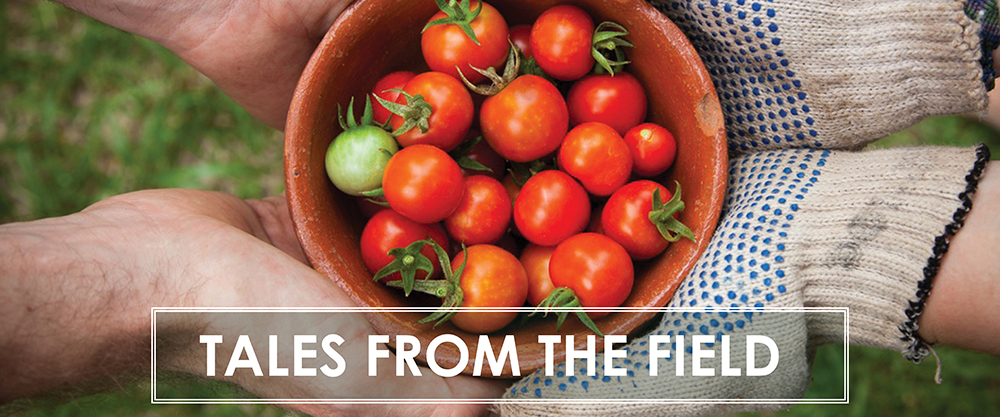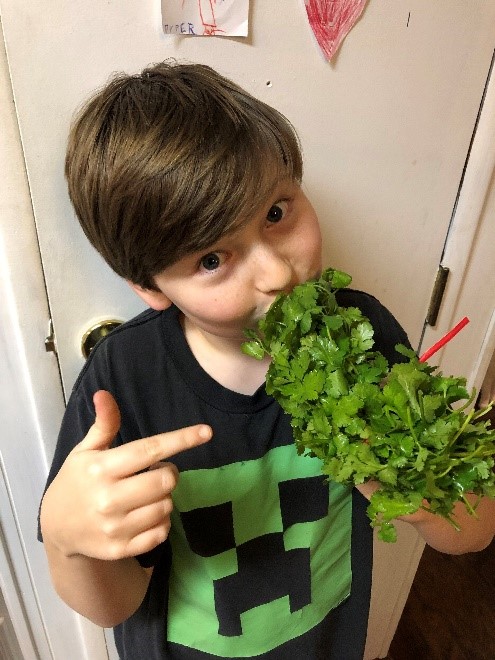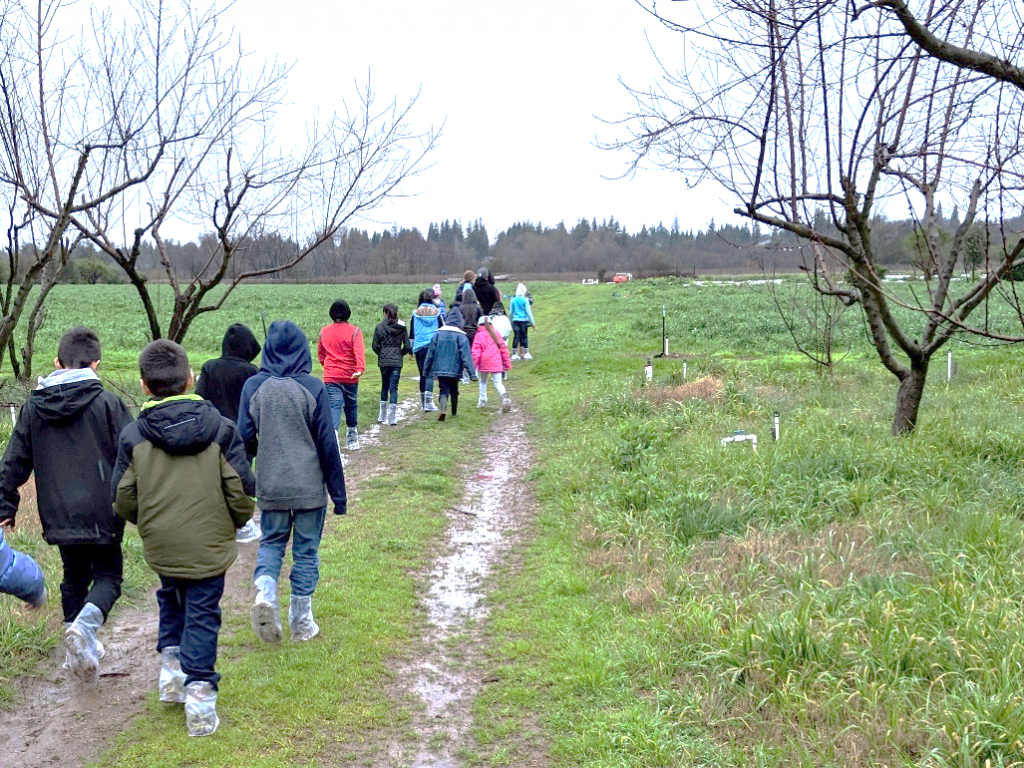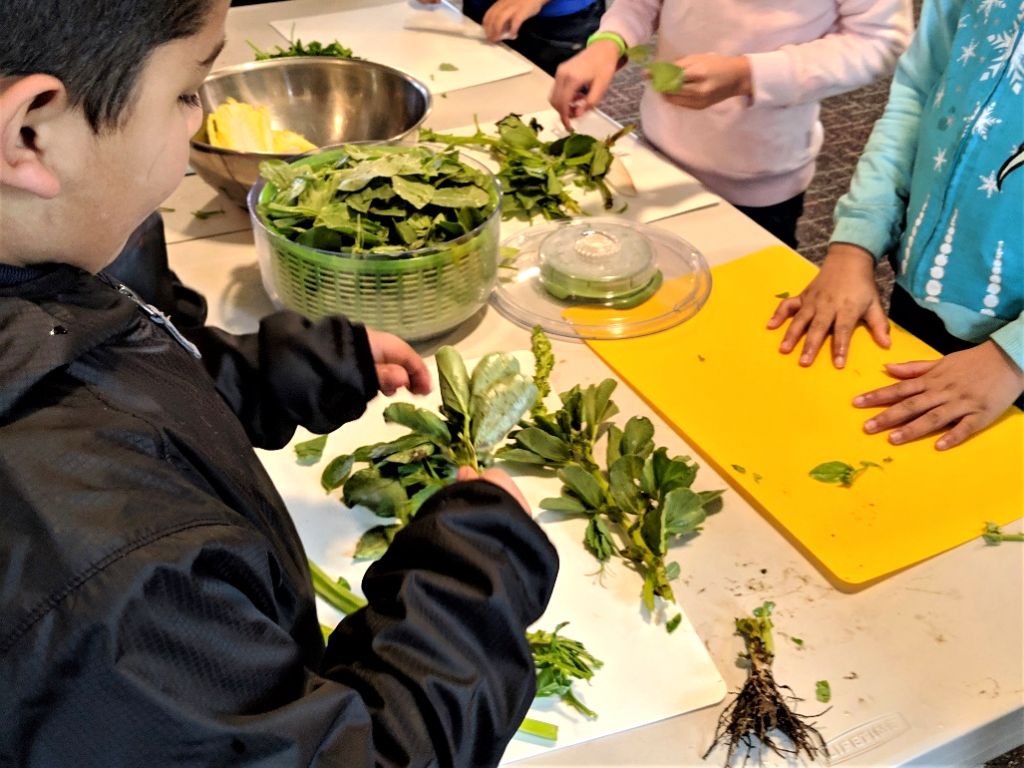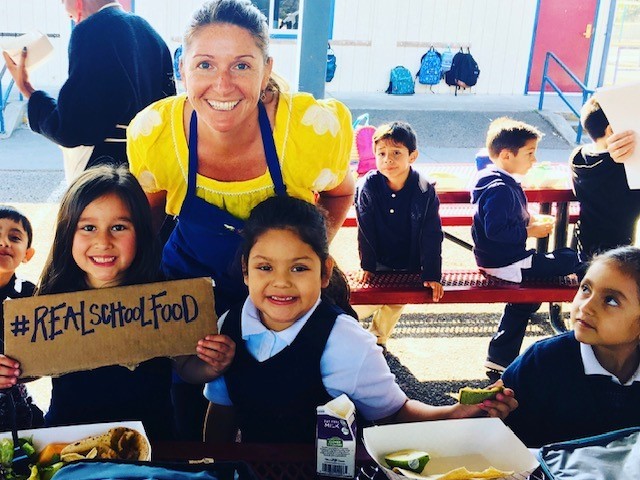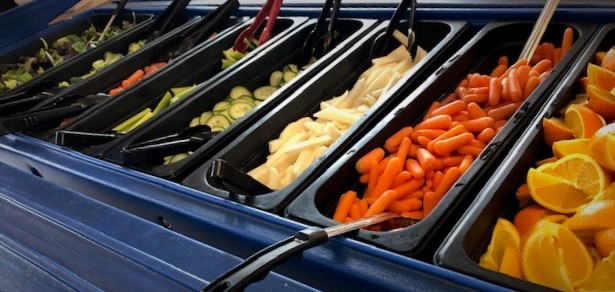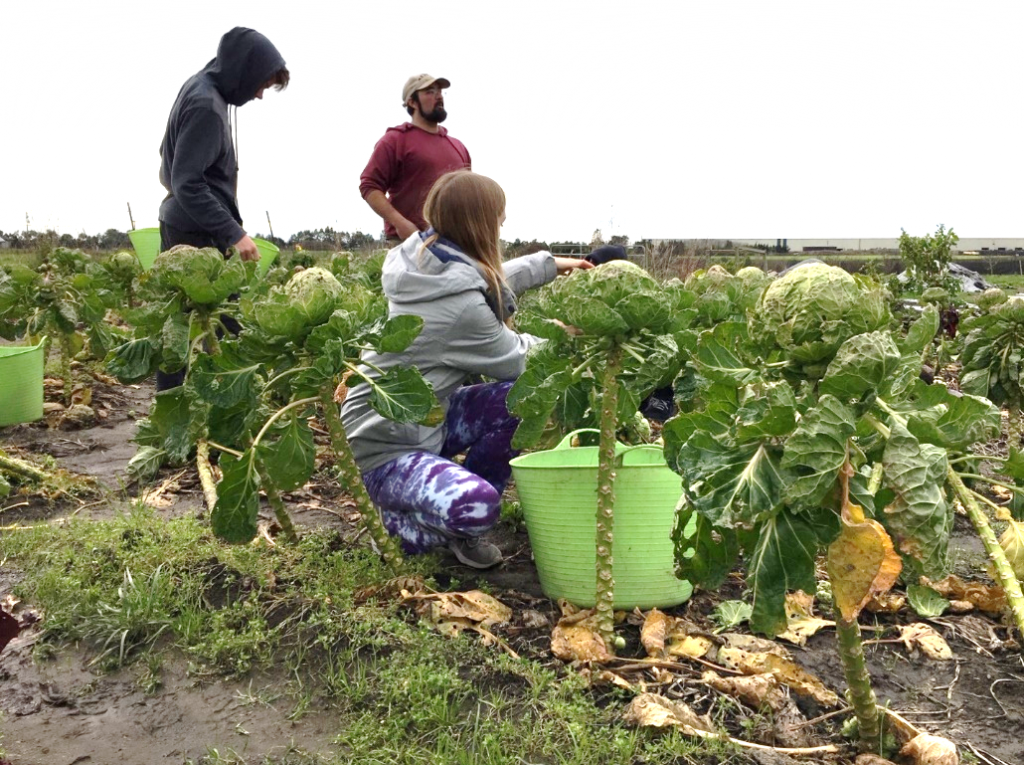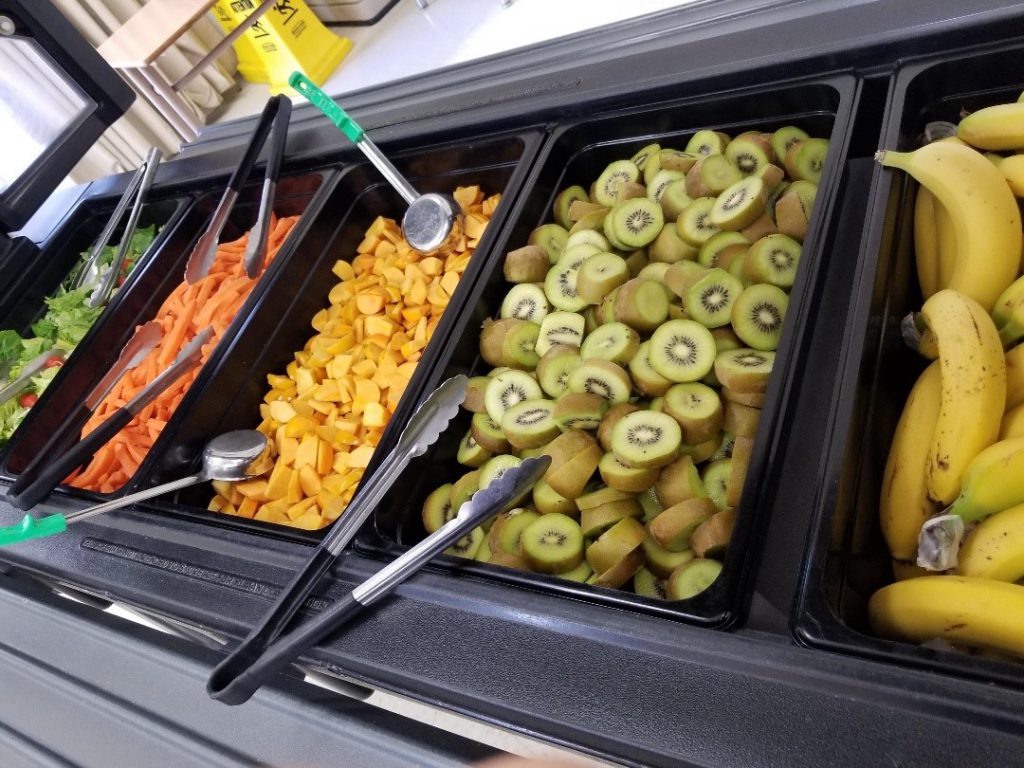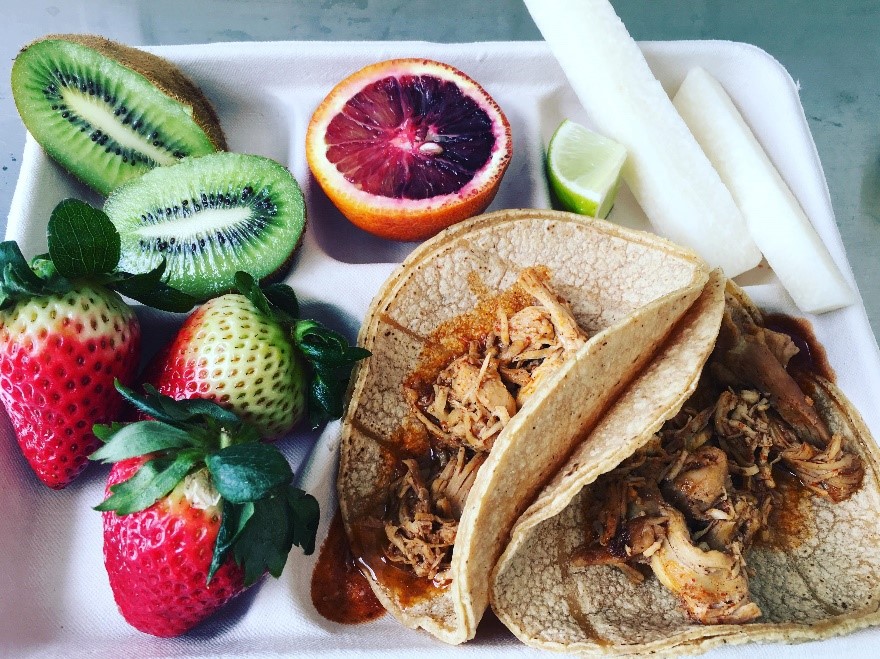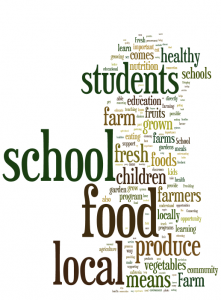Vista Unified, located in sunny San Diego county, is a shining example of farm to school success. Serving over 25,000 students with 64% of the population qualifying for free or reduced school meals, food service director Jamie Phillips and team utilize a growth mindset and shared commitment to California grown specialty crops to inspire teachers and students to eat their fruits and veggies.
One aspect of Vista Unified’s approach to school food that makes them stand out is the way they purchase directly from local farmers. After scouring the farmer’s market for local growers who could sell to the district, Vista Unified has focused on purchasing as much local product as possible, and in the last year, they’ve sourced over 30 different types of produce from the surrounding geography,. One of their favorite farms is A+A Organic Farms in Watsonville, who has provided snap peas, bell peppers, cherry tomatoes, cucumbers, broccoli, and other crops for school lunch. By procuring locally, Vista Unified achieves two great successes– serving the freshest possible food to students, and circulating money in their local economy.
Vista Unified also innovates when it comes to marketing and communication. With a top notch website and a photo menu board that shows parents and students beautiful photographs of their school lunch offerings, food and nutrition services staff no longer rely on printed menus and standard school lunch staples to feed their community. Instead, they utilize beautiful signs to communicate the menu and illustrate the time and commitment they make each day for the students, parents and community members who come to the school.
Another example of Vista Unified farm to school success comes in the form of the California Avocado. Even though it has been a down year for the avocado crop, Vista Unified still finds ways to utilize the delicious southern California food staple. On a recent visit, the staff served scratch made guacamole on rolled tacos to a crowd of excited students and teachers. The tasty meal helped everyone in attendance realize just how far school food has come, and understand just how lucky we are to have California growers supplying us with the best produce in the industry.
If you would like to learn more about vista unified, please visit their website and follow them on social media @WaveCrestCafe
